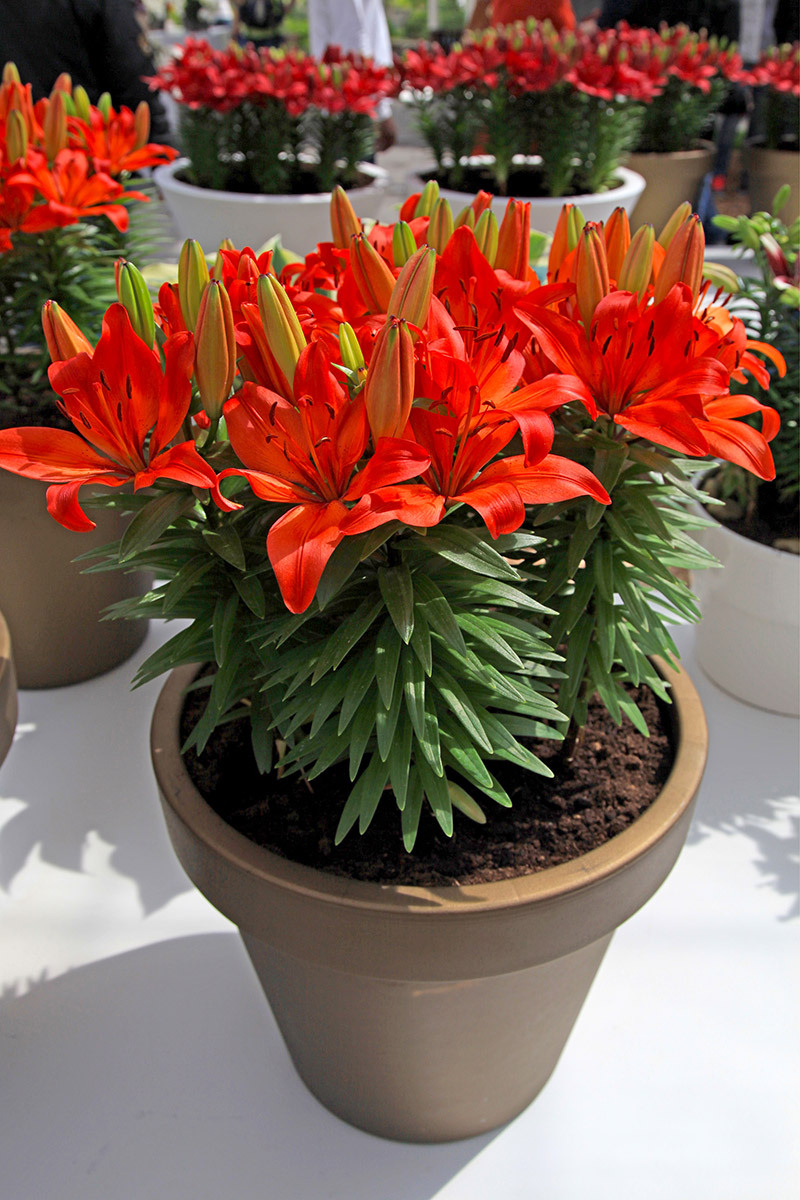Discover the secrets to preserving cut flowers
Posted on 21/08/2025
Discover the Secrets to Preserving Cut Flowers
Cut flowers have the incredible ability to brighten any room, add warmth to our homes, and bring a sense of the outdoors inside. However, the beauty and freshness of a bouquet can be fleeting without proper care. Whether you've received a romantic bouquet, picked wildflowers from your garden, or purchased a vibrant arrangement from a florist, knowing the best practices for keeping cut flowers fresh can make all the difference. In this comprehensive guide, you'll discover the secrets to preserving cut flowers and extending their lifespan with proven methods and expert tips.
Why Do Cut Flowers Wilt? Understanding the Science
Preserving cut flowers starts with understanding why they wilt in the first place. Once flowers are cut from their parent plant, they lose their constant supply of water and nutrients. Air can also get trapped in their stems, blocking the tiny capillaries that absorb water. As a result, they quickly start to dehydrate, droop, and eventually die. By learning how to care for cut flowers and prevent these common issues, you directly impact their longevity and vibrance.

Essential Steps to Prepare Your Cut Flowers
Step 1: Clean the Vase Thoroughly
Before you start arranging, ensure your vase is spotlessly clean. Bacteria lurking in an unwashed vase can quickly clog flower stems and shorten your bouquet's life. Wash the vase with warm, soapy water and rinse thoroughly. For extra sanitation, use a mild bleach solution (1:10 bleach to water ratio) and let the vase air dry.
Step 2: Trim the Flower Stems Properly
Cut flower stems at a 45-degree angle under running water or while submerged. This cutting method increases surface area for water absorption and prevents air bubbles from blocking the stem. Use sharp scissors or garden shears to avoid crushing the flower stems. Trimming about an inch from the bottom rejuvenates the uptake path and immediately kickstarts water absorption.
Step 3: Remove Lower Leaves
Strip any leaves that would sit below the waterline in your vase. Leaves submerged in water decompose quickly, promoting bacterial build-up that can block stems and produce unpleasant odors.
The Best Water for Preserving Cut Flowers
While tap water is generally suitable for flowers, using lukewarm water helps stems absorb moisture faster. Cold water can shock some blooms, while hot water may damage delicate species. For most varieties, fill the vase about two-thirds full with fresh, lukewarm water before adding the flowers.
- Change the water every two days.
- Rinse the vase thoroughly during each water change.
- Re-cut stems slightly every time you replace the water.
DIY Flower Food: Nourish and Protect Your Blooms
Commercial floral preservatives can extend flower life by providing nutrients and inhibiting bacterial growth. Nevertheless, you can make your own homemade flower food using common household ingredients. Here are three effective recipes:
Homemade Flower Food Recipes
- Simple Sugar Solution: Mix 2 tablespoons of lemon juice, 1 tablespoon of sugar, and 0.5 teaspoon of bleach in 1 liter of water. Sugar provides nourishment, lemon juice lowers pH, and bleach inhibits bacteria.
- Vinegar and Sugar: Add 2 tablespoons of white vinegar and 2 tablespoons of sugar to 1 quart of warm water.
- Aspirin Method: Crush one uncoated aspirin tablet and dissolve it in your vase. Aspirin lowers water pH, enhancing water uptake.
Tip: Always dissolve food thoroughly and use fresh mixtures when replacing water.
Placement Matters: The Ideal Environment for Cut Flower Preservation
Choosing the right placement for your vase can prolong the freshness of cut flowers dramatically. Location is key: keep flowers out of direct sunlight, in a cool room, and away from heat sources (like radiators and appliances). Also, avoid placing vases near ripening fruits--the ethylene gas they emit can cause flowers to wilt faster.
- Avoid drafts and direct fans.
- Keep away from open windows on windy days.
- Set arrangements on cool countertops or tables.
Special Tricks for Extending Cut Flower Freshness
Want to uncover the secrets of flower preservation florists use? Here are some expert-approved hacks for preserving cut flowers for longer:
1. Routine Stem Trimming
Every couple of days, trim a small segment from the base of each stem. Fresh cuts open up new passages for water to enter, boosting longevity.
2. Remove Wilting or Damaged Petals
Snip off any petals or leaves that look brown or bruised. Damaged plant tissue can hasten decomposition and impact other flowers in the arrangement.
3. Mist the Flowers
A gentle spritz of cool water on the blooms keeps petals hydrated--especially helpful for delicate or tropical flowers. Be careful not to over-wet, which can promote mold growth.
4. Keep Flowers Cool Overnight
Some flower types, like roses and tulips, last longer when stored in a cool place overnight. If you have fridge space (and no fruit inside), set arrangements in the fridge for a few hours each night for optimal longevity.
5. Watch for Signs of Bacterial Growth
If the water turns cloudy or smells foul, bacteria are present. Change the water immediately and trim the stems before reinserting.
Flower-Specific Preservation Secrets
Different flower varieties have individual needs for maximum freshness. Pay attention to these special considerations:
- Roses: Remove outer "guard petals" for a crisper look. Cut stems under water and use a clean, sharp knife.
- Tulips: Prefer shallow water. Support stems by wrapping paper around the bouquet and standing them up in the vase for the first few hours.
- Hydrangeas: Submerge heads in cool water for 30 minutes before arranging, and mist leaves daily.
- Sunflowers: Strip all leaves below the waterline and change water daily, as these can be prone to bacterial growth.
- Lilies: Remove pollen-laden anthers to avoid stains and prolong petal life.
Common Mistakes That Shorten the Life of Cut Flowers
Even with the best intentions, certain habits can sabotage your efforts at flower preservation. Avoid these pitfalls:
- Using dull scissors that crush stems rather than cleanly cutting them.
- Forgetting to change water regularly.
- Placing flowers in direct sunlight or near heating vents.
- Neglecting to remove wilting blooms that can spread decay.
- Allowing leaves to soak in stagnant water.
The Truth About Additives: What Works and What Doesn't
The internet is full of myths about preserving cut flowers longer. While some traditional techniques seem to work, others are more superstition than science:
- Pennies in the vase: The copper may have slight antibacterial properties, but this method is inconsistent and not as effective as bleach or vinegar solutions.
- Bleach: In very small amounts, bleach inhibits bacterial growth. Too much, however, can harm delicate stems.
- Sugar: Nourishes flowers, but if used excessively, it can accelerate bacterial growth.
- Vodka/Alcohol: May slow down ethylene production but isn't proven to significantly extend flower life.
When in doubt, stick with proven commercial or DIY flower food recipes for the best results.
Frequently Asked Questions: Preserving Cut Flowers
How do I make cut flowers last the longest?
- Trim stems every few days and change water regularly.
- Keep the vase and any utensils clean.
- Use a proven flower preservative or homemade solution.
- Position flowers in a cool, shaded place and avoid fruit.
How long do cut flowers typically last?
With proper care, many cut flower varieties will last between 7-12 days. Hardy types such as carnations, mums, and lilies can often last two weeks or more. Tropical or delicate flowers, such as poppies and dahlias, may only last for a few days, even with optimal flower preservation techniques.
What's the best temperature for preserving cut flowers?
The ideal temperature is between 65-72?F (18-22?C). Higher temperatures can speed up wilting, while cold drafts can damage blooms.

Going Beyond: How to Preserve Flowers as Keepsakes
If you wish to preserve flowers for memories, consider these options beyond extending vase life:
- Air Drying: Tie small bouquets together and hang them upside down in a dry, dark place for several weeks.
- Pressing: Place flowers between parchment or wax paper inside a heavy book to flatten and dry them.
- Silica Gel: Bury blooms in silica gel and leave them for 1-2 weeks to retain color and shape.
- Resin Encapsulation: Encapsulate dried flowers in resin to make jewelry, art, or keepsake ornaments.
Conclusion: Enjoy Fresh Cut Flowers for Longer
Preserving cut flowers isn't just about keeping them alive; it's about honoring the beauty and intention behind their gift. By understanding the science of water uptake, practicing diligent care, and embracing proven tricks from the world's best florists, you'll enjoy long-lasting flower arrangements that continue to brighten your space for days to come. Remember to keep stems trimmed, change water regularly, and follow our guide to easily preserve your cut flowers--bringing more vibrant color, fragrance, and joy into your everyday life.
Share these secrets with friends and family to spread the joy of flowers that truly last!







